The Ivano-Frankivsk region in Ukraine seems like a fairy tale land. The river Dnister flows through its picturesque hills covered with golden sunflower fields, small villages and green forests. These fertile lands, rich in flora and fauna, have over centuries represented the basis for the livelihood of traditional agricultural communities. Now this perennial lifestyle is under threat.
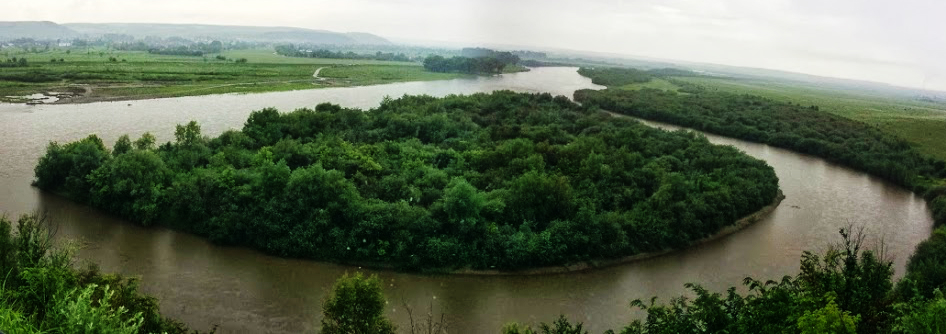
The Dniester River near the village of Mariampil in the Halych region
Almost ten years ago Danish company Danosha came to the region with ambitious plans to develop large scale pig farms and make a solid profit along the way. And they did pursue this ambition, building five pig farms across the Ukraine.
Yet the Danosha farms have brought a negative impact on local nature and livelihoods, which has not gone unnoticed by locals. On the contrary, this has sparked unexpected civic mobilisation.
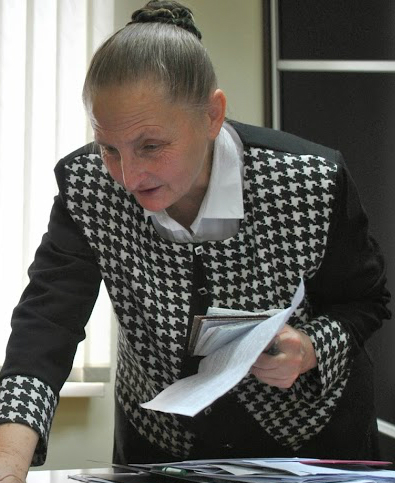
An unlikely leader of the protest: Maria Vasylivna Antoniv
The leader of the movement to keep traditional livelihoods is 83 year old Maria Vasylivna Antoniv. She was not afraid to initiate protests against the company that was endangering the lands of her village with pollution and devastation. And an entire community followed her to stand against Danosha.
Foreign investor
Year 2003. Denmark: The Danish company Axzon decided to expand its operations and build new large-scale pig farms, a decision that significantly changed the livelihoods of communities thousands of kilometres away from Denmark – in Ukraine.
Axzon is a big argicultural holding company producing annually around 650 000 pigs at home and abroad. In Ukraine, Axzon operates through its subsidiary company – Danosha. With a current turnover of 125 000 pigs per year, Danosha is the second largest pig producer in the country [ua].
To reach these results, Danosha renovated old pig farms and built new ones in the Kalushskij and Galuckij districts in the Ivano-Frankivsk region in western Ukraine. From 2004 to 2013 Danosha launched five farms named after the villages where they are situated: Kopanki farm, Luka farm, Tustan farm, Wielki farm and Lanu farm. The sixth farm – Delieve – is in preparation, and the company’s plans include a seventh – Sivka farm. The farms, spread out in the Ivano-Frankivsk region, affect a number of villages.
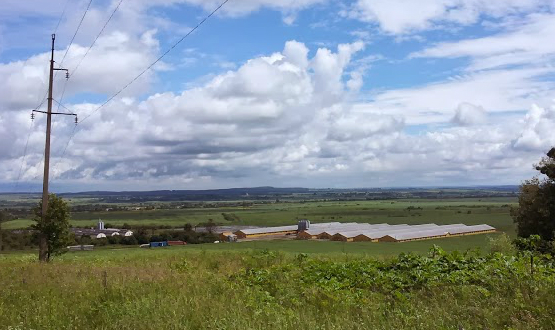
The Luka pig farm with a capacity of 24 000 pigs
The company claims that it brings benefits to the economic situation and social life of the involved villages. It has indeed supported some development initiatives in the villages next to production spots. For example, the Social Fund created by Danosha in 2011 gave annually around 35 000 Danish crowns to the 36 villages in the region for renovation works and other community needs.
However, not everything was so wonderful around the company, and the negative effects of industrial pig production in the region have been much broader than could be compensated for by a small Social Fund, as useful as this might be. Industrial farming destroys livelihoods that small amounts of compensation cannot even begin to make up for. This is why villagers stood up against Danosha.
Industrial livestock production
Year 2005. Ivano-Frankivsk region, Ukraine: Danosha reached an agreement with the village council of the Sivka-Vojlynivska village to build another large scale pig farm on the village’s land and signed around 200 agreements with individual farmers for land lease for other operations.
This was the time when Maria Vasylivna, retired teacher in physics in her 83, started wondering whether the large-scale pig farm was as beneficial to the community as the company claimed. For Maria Vasylivna, the Sivka village and the Ivano-Frankivsk region represent her motherland. Her family has been living there for generations. Having three children and many grandchildren, she wanted them to inherit and enjoy their native lands and the environment. She feared that large scale pig production, which is known for its adverse effects on the environment, will come with damage rather than benefits. Her fears were not groundless.
Danosha is first of all an industrial company, defined by large scale operations and quick turnovers. On average, each farm is designed to host 20 000 pigs at the same time. Such industrial pig production is as a rule connected to a number of environmental, public health, economic and social problems.
The most significant problems with industrial pig farms are linked to the production and management of large quantities of manure which is generated by tens of thousands of animals in millions of tons annually. The manure produced is usually untreated. The farms (including those of Danosha) mainly store manure in manure pits or lagoons, which can be further used on the fields as fertilizer. This is pretty much the way farm waste was treated by farmers over centuries.
However, the difference between traditional small and medium scale farms and industrial farming lies in the scale of operations. Industrial farms produce so much manure in one location that it exceeds the soil’s ability to incorporate it. Manure storages can leak and farmers can also over-apply manure on the fields.

One of Danosha’s numerous manure lagoons in the region. The pit will be covered by a special material and will then be used to storage manure.
The massive quantities of manure that leak into the environment pollute soil, surface and ground waters, and the air. Manure has nitrogen, phosphorus and bacteria that can damage the ecological balance of ecosystems, endanger biodiversity, and people’s health. In some cases, the manure leakages can kill sensitive aquatic species. Large quantities of manure are not only a liquid pollutant, they also produce damaging gas emissions. Noxious gas emissions from manure include hydrogen sulfide, ammonia and methane. These gas emissions can cause respiratory problems, skin irritation, headaches and even – under the condition of long-term exposure – neurological problems. Such environmental and health issues lead to a number of social and economic problems related to treatment, compensations and mitigation of environmental impacts.
Maria Vasylivna and other residents of the village observed all of the above problems as the company started its expansion.
Beginning of the opposition
Year 2006: The first roots of the opposition started to rise in the small peaceful village Sivka-Vojnylivska. Before Danosha appeared, life in the village had been unchanged for ages. Locals cherished their gardens, cultivated vegetables and looked after family farms. However, the risk of having a large pig farm nearby started to make people nervous.
Even though Maria Vasylivna had health problems, when the danger of the pig farms became clear, she chose to set those aside and channel all her energy into dealing with the issue. She enthusiastically encouraged discussions regarding the pig farm. An authoritative community member and skilful orator, she managed to make people talk and share their thoughts and fears. Gradually, following numerous discussions, many villagers grew sceptical about Danosha. Step by step, the villagers’ dissatisfaction transformed from kitchen talks to consolidated opposition.
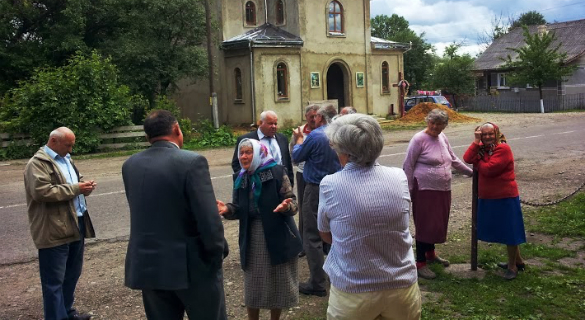
A meeting in Sivka-Voinylivska
Sivka villagers were not inventing problems: they could observe the impacts of a similar industrial farm in nearby Luka and thus learn first-hand about the effects of industrial farming on the surroundings. Watching already existing problems, they wondered what would come of their village. People felt threatened by the possibility of losing their most important asset: the land, which constitutes not only their main source of income, but also a cultural and historical treasure.
Villagers could notice leakages of manure on the fields and feel the smell coming from the Luka Danosha pig farm. Spreading manure in the fields is practised in local individual households, so people were not surprised by the technology. However, in the case of Danosha, the manure was put on the fields in significant volumes, with disturbing effects. People worried that Danosha’s actions would affect the upper fertile layer of their soils, harming farming potential.
In a region where people have been dependent on land and agriculture for decades, a threat to land equals a tragedy. “Sivka is my village, my homeland. I have roots there and would like to come back forever and spend retirement where my roots are. But if Danosha destroys the soil, it will destroy the lifeblood of the village”, says Maria Vasylivna.
Not only fields with fertile soil were in danger, but also water resources, biodiversity and people’s health. The spread of manure in the neighbouring village was always accompanied by strong smell; people complained about headaches, respiratory diseases and eye irritations.
As manure spread further into the environment, it contaminated springs and ground water. Locals blamed Danosha for polluting the water to the extent that the fish in rivers died. From small rivers and streams in the region contamination can reach the Dniester River, a transboundary watercourse of regional importance.
As a result of Danosha’s operations one of the most important recreational areas in the country is also under threat. Danosha located its capacities close to the Halych national park which hosts fragile ecosystems. The park is one of the largest in the country regarding the number of endangered species it hosts. The Red Book of Ukraine, the European Red List and the Bern Convention on the Conservation of European Wildlife and Natural Habitats all protect species that live in Halych. The park also hosts unique wetlands which are currently undergoing a process of validation under the Convention on Wetlands of International Importance (UN, Ramsar 1971); they could soon receive protected status as wetlands of international importance. Representatives of the park stress that not a single consultation was made about the potential effects of large-scale farming on the park’s environment despite one of Danosha’s facilities being situated just eight meters from the border of the protected areas.
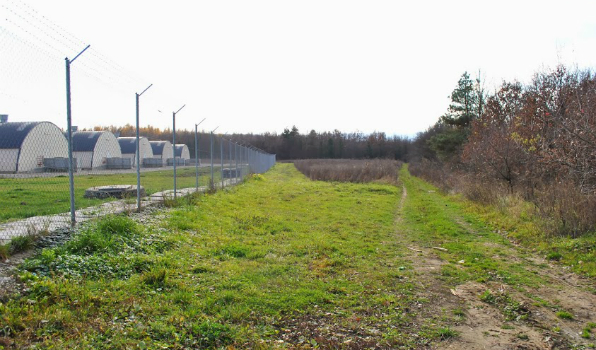
Danosha’s Lany farm (left) and just across the small glade the territory of National Nature Park begins (where the trees start on the right)
While the harm to the environment is more visible, it is not the only damage: people’s cultural bonds are being threatened. Families who have been living in and preserving this environment for generations are now afraid of losing it to a foreign company.
“It is our land and we will maintain it for future generations in good conditions”, said Maria Vasylivna. “My son and daughter were swimming and fishing in the river, they were picking raspberries and enjoying nature. I want my grandchildren to experience the same”.
The fight
Year 2010. A room in the Sivka-Vojnylivska village council building: With no support from the village council, Maria Vasylivna gathered people and led debates about pig farming. The dissatisfaction of people was clear: Danosha’s operation smelled and contaminated soils and water; the company did not compensate for the lands it used, and it threatened village life in the future. The community decided to organise a local referendum during which in the end almost all villagers rejected having a Danosha industrial farm in their village.
In response to people’s pressure exercised via a referendum in October 2010 and further advocacy, the village council terminated the lease agreement with Danosha in June 2012. But the company did not relent. Instead, it sued the village council, arguing that the termination of the lease could only take place if both sides consent. Maria Vasylivna with other locals had to go to court to protect their beliefs.
At that time, the case was already known in the region. There were articles in the local media, the neighbouring villages kept track of the case, and lawyers from the international NGO Ecology Pravo Ljudyna provided advice and legal support to Maria Vasylivna and her fellow villagers. Maria Vasylivna tried her best to make the struggle public and encourage other communities to stand up for their lands.
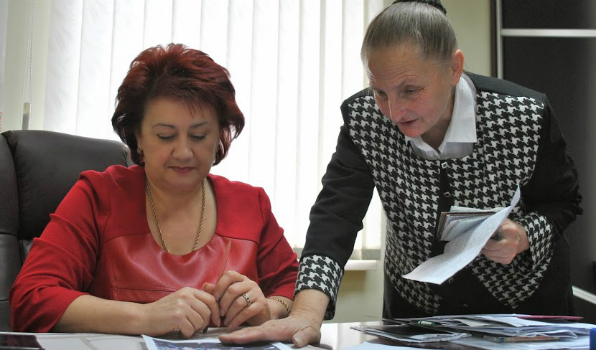
Maria Vasylivna talking to the deputy from the Governmental Committee of Environmental Policy, raising awareness for the communities’ problems.
During the court hearings, numerous law breaches leading to the company’s rental of local lands back in 2005 were identified. Thus, in May 2013, the company, which had not expected such organised and persistent resistance, expressed its intentions to terminate the land lease agreement. Danosha then signed an accord with the village council by which it agreed to the termination of the agreement for the purpose of saving “good neighbourhood relations” with locals.
Afterword
After all the meetings, discussions, protests, and hearings, Maria Vasylivna feels relieved. But there is still a lot to do. The experience of a village community fighting against a foreign company is worth sharing with others facing similar threats.
The cancellation of the 2005 agreement means that the Danosha industrial farm will not be located in Sivka-Vojnylivska village, but it does not protect neighbouring villages from the threat of large scale pig farming.
Danosha is currently looking for opportunities to expand its operations in Ukraine. Ukraine is a potential gold mine for Danosha – after all, it has both the resources and favourable tax conditions. Since 2009, the company’s profits in Poland and Ukraine grew more than three times. With the support of international development banks, like the World Bank or the European Bank for Reconstruction and Development (EBRD), the expansion is even more likely to be fast. So far the IFC (the World Bank’s financing arm) provided a loan for the company, and the EBRD is considering giving another.
At the same time, the majority of the affected villages are poorly organised and informed and usually people are not active on such public matters. There is little to no information available about the investor’s plans for the region and about the potential effects of large scale farming.
In fact, to date, only one village out of the 36 which neighbour Danosha’s facilities had the strength to resist up to the point when the agreement was terminated. But there is hope. Inspired by Maria Vasylivna and her Sivka-Vojnylivska example, locals in two other villages have started organising to oppose industrial farms.
While industrial livestock producers turn their sights towards Ukraine and other eastern European countries, local citizens might still have a word to say after all about decisions concerning their lands and livelihoods, their lives, their future.
